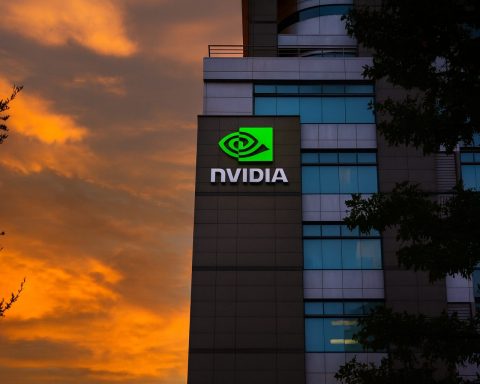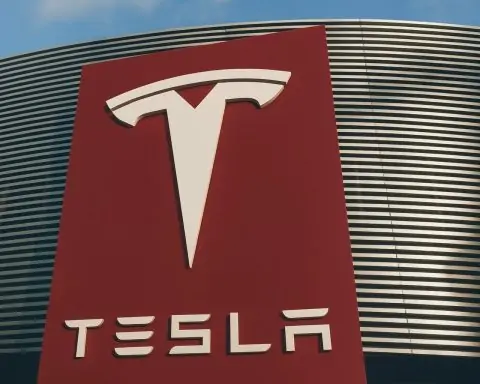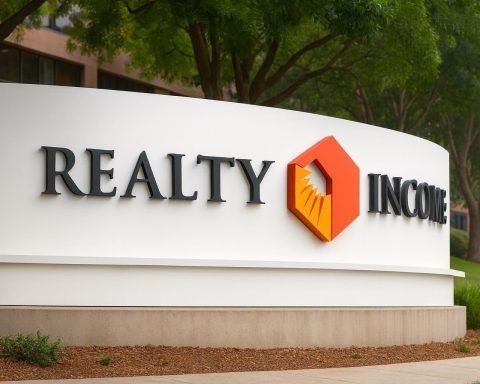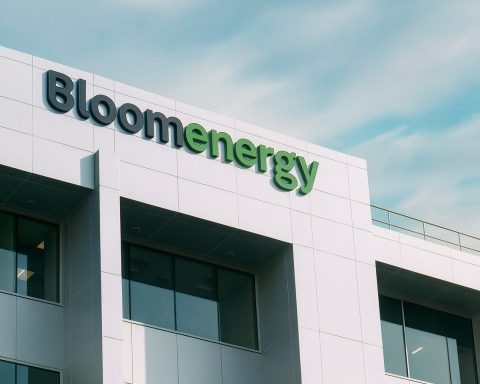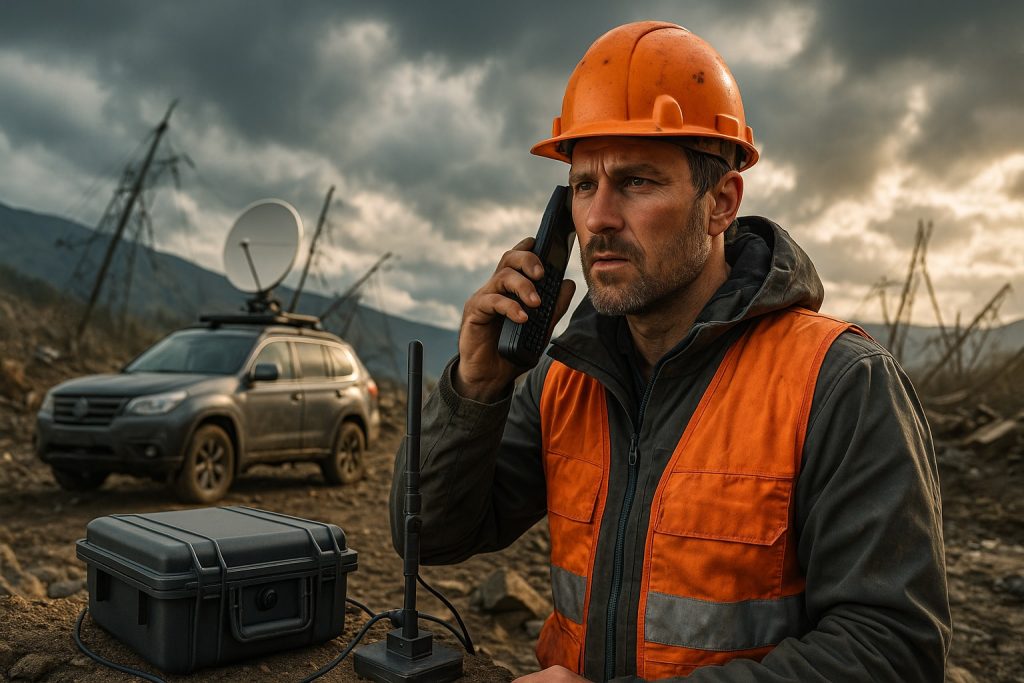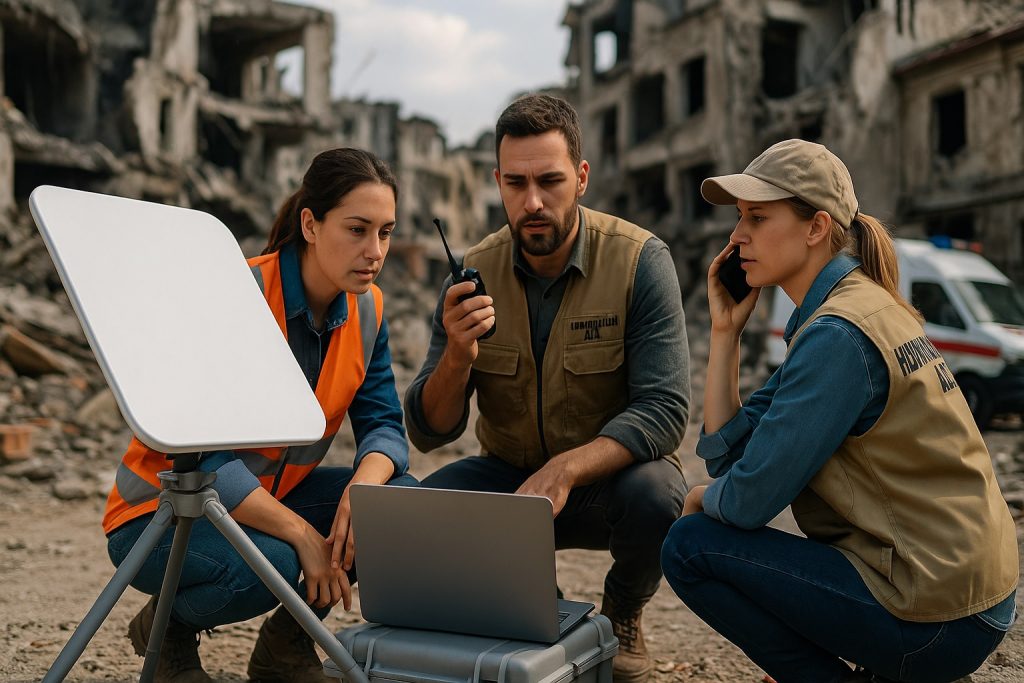- As of early 2025, about 12.4 million Cameroonians were internet users, representing 41.9% of the population.
- As of 2024, roughly 60% of Cameroonians live in urban areas, with internet access heavily concentrated in cities and rural areas almost inaccessible.
- Cameroon’s fiber backbone extends over 12,000 kilometers and is connected to five landfall cables: SAT-3, WACS, ACE, SAIL, and NCSCS, with SAIL linking Kribi to Brazil.
- Plans are underway to add more than 4,000 kilometers of fiber, expanding the backbone to about 17,000–22,000 km and improving regional redundancy.
- The mobile market is dominated by Orange Cameroon (about 11.7 million subscribers, 39.6% share) and MTN Cameroon (about 10.8 million, 36.6%), with Nexttel around 6.5 million (about 22%) and Camtel about 0.56 million (1.9%).
- By 2024, Cameroon had about 25.4 million mobile connections (87.5% of the population), though many users hold multiple SIMs and unique mobile internet users are lower.
- Fixed broadband remains very small, with about 603,000 fixed broadband subscriptions in 2022 (roughly 2% of the population), and Cameroon ranked 93rd of 93 on the 2024 Fiber Development Index with a score of 4/100.
- Starlink is not officially licensed in Cameroon as of 2025; authorities banned Starlink imports in 2024, though some roaming signals were briefly allowed earlier.
- Cameroon suffered one of the world’s longest internet shutdowns in 2017 when the Anglophone Northwest and Southwest regions were offline for 93 days, with additional months of social media blocks in 2017–2018.
- In 2023 the average price of 1 GB of mobile data was about $1.63, but this represented roughly 3.1–3.6% of average monthly income, exceeding the 2% GNI affordability benchmark.
Cameroon, a Central African nation of about 29.5 million people, is racing to improve internet connectivity for its citizens. As of early 2025, roughly 41.9% of the population uses the internet, leaving the majority still offline [1] [2]. Internet access has grown rapidly over the past decade, yet it remains unevenly distributed and faces many challenges. Urban centers enjoy far more connectivity than rural villages, creating a significant digital divide. This report provides a comprehensive overview of internet access in Cameroon – from current penetration levels and infrastructure, to service providers and costs, to the challenges and initiatives shaping the country’s digital future. Key comparisons with other African nations are included to contextualize Cameroon’s progress. The goal is to shed light on Cameroon’s connectivity landscape and the “race” to get the nation online, examining both achievements to date and the road ahead.
Internet Penetration and Access Overview
National Internet Usage: Cameroon’s internet penetration stood around 42–44% of the population in 2024-2025, meaning less than half of Cameroonians are online [3] [4]. There were about 12.7 million internet users in January 2024 (43.9% penetration) and 12.4 million at the start of 2025 (41.9% penetration) [5] [6]. This slight dip reflects rapid population growth outpacing user growth, as well as refined data on active users. In absolute terms, internet user numbers have plateaued around 12–13 million, indicating that reaching the remaining offline population – over 16 million people – is a critical challenge.
Urban vs. Rural Divide: Connectivity in Cameroon is heavily concentrated in cities. As of 2024, about 60% of the population lives in urban areas (notably Yaoundé and Douala) [7], and these areas account for the vast majority of internet access. By contrast, internet is “almost inaccessible in rural areas” of Cameroon [8]. Urban residents benefit from better telecom infrastructure (mobile base stations, fiber links, electricity supply), whereas many rural villages have limited network coverage and few public access points. Previous government efforts to bridge the urban-rural gap – such as community telecenters – had limited success. For example, a program launched in the 2000s aimed to establish 2,000 telecenters in rural areas, but by 2015 fewer than 250 were built and only a handful remained operational, leading the project to be deemed a failure [9] [10]. The result is a pronounced digital divide: Cameroonians in cities are far more likely to be internet users than those in the countryside, where basic telecommunication infrastructure and digital literacy are lacking.
Regional and Global Context: Cameroon’s ~42% internet penetration rate is close to the African average, but lags behind the continent’s most connected nations. For instance, Morocco leads Africa with about 92% of its population online [11], and South Africa stands around 75% internet penetration [12]. Even regional peers like Ghana (~70% in 2024) and Nigeria (~45%) have higher usage rates than Cameroon [13] [14]. At the other extreme, some neighboring countries have far lower access (e.g. Chad at only 12% in 2022 [15]). Cameroon thus finds itself in the middle of the African pack – ahead of the least-connected countries in Central Africa, but still far from the connectivity levels seen in North and Southern Africa. Compared to the global internet penetration (estimated around 66% in 2023), Cameroon still has a substantial gap to close.
Key Infrastructure: Fiber, Mobile, and Fixed Networks
Cameroon’s internet infrastructure is a mix of an expanding fiber-optic backbone, extensive mobile networks, and a limited fixed-line system. This section describes the physical foundations of connectivity in the country – from undersea cables and domestic fiber to cellular towers and copper lines – and how they enable (or constrain) internet access.
Fiber-Optic Backbone: Over the past decade, Cameroon has invested heavily in fiber-optic infrastructure to carry data across the country and beyond. The national fiber backbone now extends over 12,000 kilometers across Cameroon [16], connecting major cities and even reaching neighboring countries. Cameroon is actually well positioned on Africa’s submarine cable map – it is connected to five undersea fiber-optic cables that land on its coast: SAT-3, WACS, ACE, SAIL, and NCSCS [17]. These cables link Cameroon to Europe, West Africa, and even South America (the SAIL cable from Kribi to Brazil). In theory, this gives the country abundant international bandwidth. However, utilization of this capacity remains low – reports indicate Cameroon makes “very little use” of some submarine cables, due to inadequate domestic distribution and high costs [18]. In effect, the fiber backbone within Cameroon has not fully reached many end-users, especially outside the main urban corridors. The government is aware of this and has ongoing projects to extend fiber into more remote hinterlands and as part of regional integration efforts (e.g. the Central African Backbone project) [19]. Plans are underway to add another 4,000+ km of fiber in the coming years, which would expand the backbone to 17,000–22,000 km and improve redundancy [20] [21]. One challenge, however, is protecting the fiber network: vandalism and accidental damage to fiber cables are frequent and cause service disruptions. According to recent reports, fiber optic cable cuts have spiked – MTN Cameroon recorded a 40% increase in fiber cuts in 2023 compared to the prior year [22]. These cuts – whether due to construction, theft, or sabotage – highlight the need for better fiber security and maintenance to ensure reliable connectivity.
Mobile Networks and Coverage: Mobile telecommunication is the primary mode of internet access for most Cameroonians. The country has four mobile network operators (MNOs): Orange Cameroon, MTN Cameroon, Nexttel (Viettel Cameroon), and state-owned Camtel (which launched mobile services more recently). These operators have deployed extensive 2G/3G/4G networks covering much of the populated areas. In terms of coverage, 2G voice/SMS reaches a large percentage of the population, 3G data covers most towns, and 4G/LTE service is available in major cities and many secondary cities. However, rural coverage gaps remain, especially for high-speed data – many villages still rely on patchy 2G or have no signal at all.
The mobile sector has seen strong growth: by early 2024 there were 25.4 million mobile connections active in Cameroon (equivalent to 87.5% of the population, though many individuals have multiple SIMs) [23]. Mobile broadband subscriptions (3G/4G data plans) have also climbed steadily, reaching around 96 million subscriptions by 2024 according to some industry reports (including many people with cheap smartphones accessing the internet). Despite this, the number of unique mobile internet users is much lower, reflecting multi-SIM ownership and uneven coverage. The government has encouraged operators to expand coverage to underserved areas as part of their license obligations, and there is a Universal Service fund (fed by operator contributions) intended to support rural telecom projects – though the results of these efforts have been mixed.
Fixed-Line Internet: Fixed broadband infrastructure in Cameroon is limited but slowly growing. The legacy copper telephone network (owned by Camtel) has low penetration – fixed telephone subscriptions are well under 1 per 100 people [24], and DSL internet over copper reaches only a small fraction of households in major cities. In recent years, some fiber-to-the-home (FTTH) deployments have begun in urban centers: Camtel and a few ISPs offer fiber broadband in parts of Yaoundé and Douala, targeting businesses and higher-income neighborhoods. Yet overall fixed broadband usage remains very low – about 603,000 fixed broadband subscriptions were reported in 2022 (roughly 2% of the population) [25]. This means the vast majority of Cameroonian internet users rely on mobile networks, not wired home connections. Cameroon’s fixed broadband development ranks among the lowest globally; in fact, a 2024 global Fiber Development Index ranked Cameroon 93rd out of 93 countries, with an index score of only 4/100 (down from 7/100 the year before) [26]. This last-place ranking underscores how nascent fixed broadband is in the country. The government and Camtel aim to improve this by leveraging the large fiber backbone: Camtel has stated it is now focused on connecting households and businesses to fiber, increasing FTTH roll-out in major cities [27]. Partnerships with private ISPs are being explored to accelerate last-mile fiber deployment. Still, for the foreseeable future, fixed high-speed internet will remain a niche service in Cameroon, with mobile networks carrying the lion’s share of traffic.
International Gateway and Data Centers: In addition to physical cables, internet access depends on exchange points and data hosting infrastructure. Cameroon has established an Internet Exchange Point (IXP) in Yaoundé, which allows domestic ISPs to interconnect and exchange local traffic more efficiently (to avoid routing everything through Europe). The use of the IXP is growing, which helps improve local latency and reduce costs for domestic content. Data center infrastructure is also emerging – a few data centers in Douala/Yaoundé host local websites, caches (for Google, Facebook, etc.), and enterprise services. According to Internet Society’s analysis, about 12% of the most-accessed websites in Cameroon have a locally reachable cache or server, while the rest are accessed via international links [28]. Increasing local hosting is another infrastructural goal to boost performance and reduce international bandwidth usage.
In summary, Cameroon’s core internet infrastructure is improving but underutilized. The country has a strong foundation with multiple submarine cables and thousands of kilometers of fiber, plus nearly nationwide mobile coverage. The challenge is extending that backbone to communities and users that lack access, upgrading mobile sites for broadband, and securing the network against outages. The government’s plans to add fiber routes and eventually introduce new technology like 5G (pilots are expected in 2024–2025 [29]) will further enhance capacity. But without addressing the “last-mile” connectivity and affordability, the physical infrastructure alone won’t translate to universal access.
Major Internet Service Providers (ISPs) and Market Share
Cameroon’s internet service market is dominated by the mobile operators, who double as the main ISPs for most citizens. Below we outline the primary providers and their market positions:
- Orange Cameroon: A subsidiary of the French Orange Group, Orange is the largest mobile operator in Cameroon. As of Q1 2023, Orange had about 11.7 million mobile subscribers, accounting for 39.6% market share [30]. Orange offers 2G, 3G, and 4G LTE services nationwide, and has a strong presence in urban areas. It provides mobile data bundles, mobile money (Orange Money), and some fixed services for corporate clients. Orange is known for relatively extensive coverage and network quality, though it has also been fined for service issues (as noted later).
- MTN Cameroon: Part of South Africa’s MTN Group, MTN is the second-largest operator with around 10.8 million subscribers (~36.6% market share in 2023) [31]. MTN has a comparable network to Orange, covering all 10 regions with 2G/3G/4G. It leads in some innovations like early 4G launch and is popular for its MTN Mobile Money service. MTN and Orange together dominate the market, and between them serve about 3/4 of Cameroon’s internet users. Both companies have been expanding their data network capacity to meet growing demand; for example, MTN fast-tracked network upgrades in 2023 after user complaints [32].
- Nexttel (Viettel Cameroon): Nexttel is the brand of Viettel, a Vietnamese telecom company that entered Cameroon in 2014 as the third mobile operator. Nexttel garnered roughly 6.5 million subscribers (~22% market share as of 2023) [33]. It initially deployed only 2G/3G (it was the first to launch 3G in Cameroon) and only later received rights to offer 4G. Nexttel’s growth has stagnated in recent years due to internal disputes and coverage limitations, but it still holds a sizable share, particularly in some rural areas where it filled gaps.
- Camtel: Cameroon Telecommunications (Camtel) is the state-owned incumbent which historically ran fixed telephony and the national backbone. In recent years, Camtel entered the mobile market – it launched a mobile service (branded Blue) and obtained a 4G license. However, Camtel’s mobile user base remains very small: about 560,000 subscribers in early 2023, or just ~1.9% market share [34]. Camtel’s competitive advantage is control of the fiber backbone and international gateways. It provides wholesale bandwidth to the others and also offers retail DSL, FTTH, and VSAT internet to some businesses and government offices. Camtel has been working on strategies to increase its market share (aiming for 10% in the next few years) [35], including network sharing deals with Orange to extend coverage [36]. Still, as of now, Camtel is a minor player in consumer mobile internet.
Other notable providers include internet Service Providers (ISPs) that focus on fixed or enterprise connections. These are relatively few and mostly urban-centric: companies like Ringo, Creolink, Spectrum Telecom, and YooMee have offered wireless broadband, WiMAX or fiber in cities. Their customer bases are limited (corporations, NGOs, or upscale residential users). Some international satellite internet resellers also operate (for VSAT connections). Overall, the ISP landscape for fixed internet is quite small next to the big mobile operators.
To summarize the mobile ISP market, the table below shows the approximate market shares:
| Mobile Operator | Subscribers (Q1 2023) | Market Share |
|---|---|---|
| Orange Cameroon | 11.7 million | 39.6% [37] |
| MTN Cameroon | 10.8 million | 36.6% [38] |
| Nexttel (Viettel) | 6.5 million | ~22% [39] |
| Camtel (Blue) | 0.56 million | ~1.9% [40] |
Table: Mobile network operators in Cameroon and their subscriber numbers/market share (Q1 2023). Orange and MTN dominate the market, while Nexttel and newcomer Camtel share the remainder. This competitive dynamic – essentially a duopoly with two smaller challengers – influences pricing and investment in the sector.
It is worth noting that the government, through the regulator (ART), keeps an eye on this market. In 2023, all four operators were fined a combined 6 billion FCFA for poor network quality and failing to meet coverage obligations [41] [42]. Orange received the largest fine, followed by Viettel (Nexttel), MTN, and then Camtel [43]. This enforcement action indicates that, while there is competition, service quality issues are persistent across the board. There have also been consumer protests – notably, mobile users organized an “airplane mode” campaign in April 2023, switching off their phones to pressure operators over unreliable service [44]. The government responded by urging operators to improve quality and cut prices to better serve customers [45]. These events show that while Cameroon has multiple ISPs, consumers still struggle with subpar service and high costs, prompting regulatory intervention.
The Role of Satellite Internet in Remote Areas
Given the challenges of reaching Cameroon’s remote and rural regions with terrestrial networks, satellite internet is seen as an important solution to extend access. There are two main facets to satellite-based internet in Cameroon: traditional VSAT services and emerging Low-Earth Orbit (LEO) constellations like Starlink.
Traditional Satellite (VSAT): VSAT (Very Small Aperture Terminal) satellite connections have been used in Cameroon for years, mainly by businesses, government agencies, or NGOs in areas without reliable ground links. Companies like GlobalTT and others offer VSAT plans in Cameroon, using GEO satellites to deliver connectivity virtually anywhere (with a satellite dish). While VSAT can provide coverage in the most remote villages, it has significant downsides: bandwidth is limited and latency is high (due to the distance to geostationary satellites), and costs are very steep compared to terrestrial internet. Thus, VSAT usage has been relatively niche – for instance, banks might use it for branch connectivity in rural towns, or research stations might use it as a backup. It has not been a mass-market solution due to expense. There have been government initiatives to deploy satellite connectivity for community telecenters or schools, but scaling these has been difficult.
LEO Satellite Constellations (Starlink and Others): Recently, new satellite technologies promise to change the game for rural connectivity. Notably, Starlink, operated by SpaceX, provides high-speed internet via a constellation of LEO satellites. Starlink’s satellites orbit much closer to Earth than traditional satellites, enabling broadband speeds (50–150 Mbps) and lower latency (~20-40 ms), potentially comparable to 4G or fixed broadband. In Africa, Starlink has begun operations in several countries (Nigeria, Mozambique, Kenya, etc.), and many Cameroonians have shown interest in it as a way to bypass the limitations of local ISPs. However, Starlink is not yet officially available in Cameroon as of 2025. The service faces regulatory hurdles – the Cameroonian government has so far not licensed Starlink to operate. In early 2024, authorities banned the import of Starlink kits and even seized equipment found at ports, on grounds that the service was operating without authorization [46] [47]. SpaceX had allowed some users in Cameroon (especially near border areas) to receive signals on a roaming basis, but this was cut off by April 2024 to comply with regulations [48] [49]. The government’s concern, as reported, is twofold: national security (having uncontrolled foreign-operated terminals) and the need to protect domestic telecom providers from unregulated competition [50] [51]. Until a licensing framework is established, Starlink remains effectively blocked in Cameroon. This reflects a cautious approach by the government, even as neighbors like Chad have moved forward to approve Starlink to improve their connectivity [52] [53].
Besides Starlink, other LEO constellations are on the horizon. OneWeb, for instance, is another satellite network (backed in part by the UK and France) that could offer coverage via distribution partners. Also, telecom operators might themselves leverage satellite backhaul to reach remote cell towers (instead of relying solely on microwave or fiber links). In Cameroon’s context, satellite will likely play a complementary role – connecting areas that are too difficult or costly to reach with fiber or towers (deep rural north, dense rainforest pockets, mountainous regions, etc.). It can also provide redundancy during fiber cuts or serve as emergency communication links.
Challenges of Satellite Internet: While satellites can technically blanket the entire country, there are practical challenges. Cost is a major barrier – a Starlink kit (dish and router) costs hundreds of dollars, and monthly fees in other African countries are around $50–$100, which is out of reach for most rural households. Traditional VSAT is even pricier per megabyte. Power and maintenance are also concerns – rural users may lack reliable electricity to power satellite terminals continuously. Moreover, regulatory policy will dictate how freely satellite internet can be adopted. Cameroon’s current stance suggests a preference for requiring satellite operators to partner with local entities (as Kenya has considered [54]), which could influence pricing and availability.
In summary, satellite internet presents an opportunity to connect Cameroon’s remotest communities, but it is not a silver bullet. In the immediate term, satellite links are likely to serve businesses, government projects or tech-savvy users who can afford the equipment, rather than mass-market connectivity for average citizens. Over time, if costs fall and regulations permit, LEO satellite broadband could significantly boost rural internet access – effectively leaping over the lack of ground infrastructure. The policy challenge for Cameroon will be to integrate satellite solutions into its national connectivity strategy in a way that extends coverage without undermining regulatory controls or incumbents. As the “race to connect” continues, satellites will remain an important piece of the puzzle for achieving universal access.
Internet Affordability, Speeds, and Service Quality
Beyond availability of infrastructure, affordability and quality of service are critical factors determining actual internet usage in Cameroon. This section examines how much internet access costs, what speeds users experience, and how reliable services are, in comparison to other countries.
Cost of Internet Access: The price of internet data in Cameroon is a significant barrier for many people, especially those with low incomes. Mobile data is sold in bundles by the operators, with a wide array of packages (daily, weekly, monthly, varying data caps). As of 2023, the average price for 1 GB of mobile data in Cameroon was about USD $1.63 [55]. For context, the cheapest 1GB plans cost around $0.54, while some 1GB packages (often with longer validity or special conditions) cost up to $5.88 [56]. On the surface, $1.63/GB is moderately affordable in absolute terms (lower than the global average of ~$2.50/GB). Indeed, Cameroonian data prices are cheaper than in some African countries (for example, 1GB averages over $4 or $5 in countries like Ethiopia or Malawi). However, when relative to income, internet access in Cameroon is still expensive. The Alliance for Affordable Internet uses a benchmark of 1GB costing no more than 2% of monthly gross national income (GNI) per capita. Cameroon exceeds this threshold – estimates indicate a basic data package (e.g. 1GB on 3G) costs around 3.1–3.6% of average monthly income [57] [58]. In other words, the typical Cameroonian must spend several days’ worth of wages to afford just a small data bundle. For the many citizens living on low incomes, this is prohibitive. It’s noted that internet access is “unaffordable for most Cameroonians” under current pricing, according to a 2023 digital inclusion assessment [59]. High taxes on telecom services (e.g. a 19.25% VAT plus excise taxes on data) also contribute to the end-user prices.
Broadband Plans: For fixed broadband, costs are even higher. A home fiber or DSL plan (where available) might cost on the order of 20,000–60,000 FCFA per month (roughly $30–$100), which only affluent households or businesses can pay. Public Wi-Fi or cybercafés provide another access avenue – cybercafés typically charge hourly (e.g. 300–500 FCFA per hour of use), which can be affordable for occasional needs but still adds up for regular usage. The decline of cybercafés in the mobile era means fewer options for those who cannot afford personal data plans. The government has pushed operators to introduce more affordable offers; for instance, in mid-2023 the telecom minister explicitly urged operators to cut data prices to stimulate usage [60]. Promotional bundles and “social” tariffs (like night data plans, or free access to certain educational sites) have been introduced by carriers in response. Nonetheless, cost remains a top cited reason why many Cameroonians do not use the internet at all. Until data prices drop further (or incomes rise), affordability will continue to limit the inclusiveness of Cameroon’s internet growth.
Internet Speeds: The quality of internet connections in Cameroon – in terms of speed and latency – is another mixed picture. Overall, speeds are well below global averages, but have been gradually improving with 4G expansion and fiber roll-out. According to Ookla Speedtest data, at the start of 2025 the median fixed broadband download speed in Cameroon was about 9.5 Mbps [61]. This is a modest speed (suitable for basic web browsing and streaming in standard definition) and actually represented a slight decrease from the previous year (speeds were ~10.3 Mbps in 2024) [62]. The drop could be due to network congestion as more users come online without proportional infrastructure upgrades. For mobile, the average user experience is slightly better – reports suggest mobile download speeds around 13–14 Mbps on average for 3G/4G in 2023 [63]. Elite users in cities on 4G might get tens of Mbps in good conditions, but many others on 3G or in weak coverage areas see only 1–5 Mbps. For context, global average speeds are much higher (mobile ~56 Mbps, fixed ~110 Mbps as of 2022-2023), so Cameroon ranks low in speed metrics. However, compared to some peers in the region (e.g. Congolese or Chadian networks), Cameroon’s speeds are slightly better, thanks to the presence of 4G since 2015. The latency on domestic networks is decent (ping times of 30-60 ms on local server tests), but accessing international content often introduces latency of 200ms+ because most traffic routes through Europe. The push for local caches and IXPs aims to mitigate this.
Service Reliability: A frequent complaint among users is the instability and downtime of internet services. Network outages occur due to various reasons: power blackouts (which knock out cell towers or ISP equipment), fiber cuts (which can disrupt entire regions’ connectivity), and technical failures in aging infrastructure. As noted earlier, fiber cable cuts are a major cause of internet blackouts – for instance, cuts on the Douala-Yaoundé backbone have caused nationwide slowdowns or outages [64]. In March 2024, a outage on several West African submarine cables (WACS, SAT-3, etc.) impacted connectivity in Cameroon and other countries, illustrating the vulnerability to single points of failure [65]. On the mobile side, users often experience dropped connections, especially during peak hours when networks get congested. This is exacerbated by the increasing load of data users on infrastructure originally built for voice. The regulator’s quality audits have consistently found operators falling short on metrics like call setup success, data throughput, and coverage obligations – hence the fines in 2023 for “repeated violations of quality requirements” [66] [67]. Consumer sentiment reflects this: social media in Cameroon is replete with complaints about slow speeds or persistent network downtimes. In some instances, public outrage has led to campaigns (like the aforementioned airplane mode protest) and even parliamentary questions on telecom service quality.
Additionally, internet shutdowns imposed by the government have affected service reliability from a user perspective. Notably, in 2017 Cameroon experienced one of the world’s longest politically motivated internet shutdowns. The Anglophone regions had internet access cut off entirely for 93 days (January to April 2017) during a period of unrest [68]. Later in 2017 and 2018, social media access was again blocked for months in those regions [69] [70]. These shutdowns had a devastating impact on the affected communities – businesses were cut off, digital startups in “Silicon Mountain” (Buea) were crippled, and millions of dollars were lost [71] [72]. While those events were politically driven and not due to infrastructure, they underscore that reliability of internet in Cameroon can be undermined by policy decisions as well. Since 2018, there have been no nationwide shutdowns, but occasional regional disruptions (and rumors thereof) have kept users wary.
Comparisons: Compared to other African nations, Cameroon’s internet affordability and quality are middling. Countries like Egypt or Kenya offer cheaper data (often below $1/GB) and have faster average speeds, especially where fiber-to-the-home or 5G has rolled out. On the other hand, Cameroon is doing better than some of its Central African neighbors on pricing – e.g., in Chad 1GB costs over 11% of monthly income on average [73], far less affordable than in Cameroon. In terms of speed, South Africa, Morocco, and Kenya all enjoy far higher broadband speeds due to more advanced infrastructure. Cameroon has similar speed levels to other lower-middle-income African countries like Ghana or Nigeria on mobile networks. The network readiness index which factors infrastructure, affordability, and usage ranked Cameroon 118th of 134 countries in 2023, indicating significant room for improvement on many of these fronts [74]. The government recognizes that expensive and slow internet hampers the digital economy – for example, high data costs are cited as one reason why only ~44% of Cameroonians use the internet despite a much higher (~78%) basic literacy rate [75]. In short, the user experience in Cameroon is often one of rationing data usage (due to cost) and coping with moderate speeds and occasional outages. Improving this experience – by making internet faster, cheaper, and more reliable – is essential to fully realize the benefits of connectivity.
Major Challenges to Connectivity
Bridging the digital divide in Cameroon requires confronting a series of major challenges. These challenges span infrastructure shortfalls, economic and social barriers, as well as governance and policy issues. Below is an analysis of the key hurdles:
- Infrastructure Gaps: Despite progress, there are still significant infrastructure deficits, especially in last-mile connectivity. Many rural and remote areas lack network coverage entirely – no fiber backhaul, no cell towers, no electricity to power telecom equipment. This makes it technically difficult and costly to extend internet access. The challenging geography (from dense forests to mountains) and low population density in some regions mean traditional network roll-out is often not economically viable without subsidies. Additionally, existing infrastructure needs upgrades – for instance, many 3G base stations need to be upgraded to 4G to deliver high-speed data, and backhaul links need expansion to avoid congestion. The government’s goal of universal service is hindered by these physical and investment gaps.
- High Cost and Affordability: As detailed earlier, the cost of devices and data plans puts internet out of reach for a large share of the population. Many Cameroonians cannot afford a smartphone (though cheaper Android handsets have become more common) or the recurring expense of data. Poverty and high unemployment make internet a luxury for some. This is a core challenge: even if networks are available, people won’t come online if they can’t afford the access. Efforts like dropping data tariffs, offering micro-bundles (e.g. 50 FCFA mini-bundles), and zero-rating certain content can help, but the fundamental issue is low income levels relative to connectivity costs.
- Digital Literacy and Skills:Digital literacy is uneven in Cameroon. While basic literacy is around 78%, many citizens – especially in rural areas or older age groups – lack the skills to use computers or navigate the internet effectively [76]. There is a segment of the population that is illiterate or only francophone-literate (where much online content might be in English or vice versa for Anglophones). Training and awareness are needed to help people understand how the internet can be useful to them, and how to use it safely. The urban youth tend to be quick adopters of social media and messaging apps, but rural communities may not see the relevance of internet content to their lives. This knowledge gap slows adoption even when connectivity is technically present.
- Regulatory and Market Issues: The regulatory environment has its challenges. For years, Camtel’s monopoly on the backbone was cited as an issue – private operators had to rely on Camtel for fiber capacity, often at high prices, which indirectly kept retail prices high and coverage limited. The government is now restructuring the sector, considering creating a “digital infrastructure” company separate from service provision [77] to better manage wholesale capacity. Another regulatory challenge is the slow pace of some reforms – for example, clear policies for new technologies like 5G or satellite internet have lagged, causing uncertainty. Spectrum allocation for 5G, ISP license updates, and implementing number portability are all on the agenda but moving gradually. Moreover, incidents like internet shutdowns have raised concerns about censorship and reliability, which can discourage investment and trust in the network. There is also limited competition in some areas (e.g., fixed broadband) which can lead to higher prices and less incentive to improve services. The regulator has been active in pressuring telcos, but corruption and political interests can sometimes influence telecom governance as well.
- Electricity and Power Reliability: Internet access is intertwined with power supply. Cameroon struggles with power outages and limited rural electrification. Frequent electricity cuts can take down telecom equipment or make it impossible to charge devices. In rural areas, many villages simply lack the electric grid; telecom towers there must run on diesel generators or solar (increasing operational costs), and users cannot power a computer or Wi-Fi router reliably. This energy constraint is a hidden barrier to connectivity, necessitating investments in power infrastructure or alternative energy solutions for ICT.
- Security and Conflict: Parts of Cameroon have faced conflict (e.g., the Anglophone regions’ crisis in the Northwest and Southwest). In such areas, telecom infrastructure has sometimes been vandalized or shut down deliberately. Insecurity can prevent technicians from maintaining sites or installing new equipment. Additionally, concerns over security have led to government-ordered network disruptions (as was the case in 2017). Such instability in policy and environment can stall connectivity projects and shake user confidence.
Each of these challenges is significant on its own; together, they form a complex web that Cameroon must navigate to achieve its digital development goals. Addressing infrastructure gaps will require heavy investment and innovative approaches like public-private partnerships or community networks. Tackling affordability might involve policy measures (tax reductions on telecom services, subsidized rural access schemes) and encouraging competition. Improving digital literacy calls for education and outreach programs, possibly integrating digital skills into school curricula and community training via telecenters or NGOs. On the policy front, continued regulatory reform and transparency will be key – for example, implementing the planned sector restructuring (creating a dedicated infrastructure company) and ensuring fair, open access to backbone networks for all operators. Cameroon also needs to maintain a balance between security and openness; avoiding future internet shutdowns and instead using the internet as a tool for development even amid political challenges will be important to keep progress on track.
It is clear that there is no single solution – a holistic effort is needed, involving government, private sector, and civil society, to overcome these barriers. Encouragingly, Cameroon’s National Development Strategy recognizes many of these issues and sets targets to address them (as discussed in the next section). The race to connect the nation will depend on how effectively these challenges are mitigated in the coming years.
Government Policies and Programs to Improve Connectivity
The Cameroonian government has articulated a commitment to expanding and improving internet access, recognizing it as a driver for economic growth and social development. Over the years, several policies, plans, and programs have been launched to support this goal. Below we outline the key government initiatives and their status:
“Digital Cameroon” Strategic Plans: In 2016, the government through the Ministry of Posts and Telecommunications (MINPOSTEL) developed a Strategic Plan for a Digital Cameroon by 2020. This plan was an outcome of Cameroon’s low ranking (126th of 143) in the World Economic Forum’s Networked Readiness Index 2015, and it aimed to accelerate ICT development [78]. The strategy emphasized building ICT infrastructure, improving affordability, and increasing ICT usage in government and society. While the 2020 target has passed, it laid a policy foundation and some projects were executed under its umbrella (e.g., expansion of broadband infrastructure, promotion of e-government services, etc.).
The latest high-level roadmap is integrated into Cameroon’s National Development Strategy 2020–2030 (NDS30). Under NDS30, the digital economy is expected to grow by 6.4% annually through 2029 [79]. To achieve this, NDS30 outlines specific objectives:
- Restructuring the Telecom Sector: The plan calls for reconfiguring the ecosystem, notably by creating a “digital infrastructure heritage” company [80]. This likely means carving out the national fiber backbone and other assets (perhaps from Camtel) into a neutral wholesale entity that can serve all operators efficiently. Such restructuring is aimed at improving governance and investment in backbone infrastructure.
- Building Out Infrastructure: Continuing to build substantial digital infrastructure is a core tenet [81]. This includes completing ongoing fiber backbone projects (like the National Broadband Network phases, the Central African Backbone links to neighboring countries, and a National Emergency Telecom Network for resilience) [82]. It also involves extending connectivity to underserved areas via various means (fiber, microwave, or satellite), and upgrading urban networks (e.g., preparing for 5G and expanding FTTH in cities). The government often partners with international lenders (World Bank, African Development Bank) to fund such projects – for instance, the Central African Backbone project laid hundreds of km of fiber connecting Cameroon to Chad and CAR.
- Securing Networks: Ensuring network security and reliability (“securing the networks globally”) is another stated goal [83]. This speaks to measures against cyber threats, as well as physical security (addressing fiber cuts and vandalism as noted before). The government in 2022 launched campaigns to sensitize the public against vandalizing fiber cables and has considered stricter penalties for such acts [84]. Cybersecurity frameworks are also being updated, given increasing cybercrime.
- Digital Inclusion and Innovation: The government is promoting digital literacy and inclusion programs. MINPOSTEL has run digital training centers and coding workshops for youth. Additionally, the concept of community telecentres has been revisited in a new form – creating multi-purpose community digital centers equipped with internet, which can be operated in partnership with local councils or churches to ensure sustainability (learning from the failures of the early 2000s telecentre project). There is also focus on including women and disadvantaged groups; for example, some initiatives target increasing women’s access to ICT, recognizing the current gender gap in internet usage [85].
- E-Government and Services: Cameroon has been investing in e-government platforms to bring services online. The idea is twofold: improve government efficiency and also spur demand for internet (as citizens go online to access services). Projects include online portals for tax payments, digital ID systems, and e-learning platforms (which saw accelerated development during COVID-19). The Digital Transformation Center Cameroon (a program with support from Germany) specifically works on e-government and rural digital projects [86].
- Tech Hubs and Local Content: Government policy also supports the creation of digital innovation hubs and technopoles [87]. For instance, there are plans (still early-stage) for technology parks in Cameroon that would provide infrastructure for startups and IT companies, in hopes of nurturing local content creation and tech entrepreneurship. “Silicon Mountain” in Buea (an organically grown tech community) has garnered government attention, and there are efforts to replicate such models elsewhere. By developing local apps, content, and services, Cameroon aims to increase the relevance of the internet to its citizens (thus driving adoption).
Regulatory Reforms: The Telecommunications Regulatory Board (TRB or ART) has been active in enforcing quality standards and consumer protection. For example, after public outcry over poor service, the government in 2023 held operators to a “crisis meeting” to demand improvements [88]. The regulator monitors coverage expansion – both Orange and MTN have license clauses to cover a certain percentage of rural localities, and the regulator periodically checks compliance. Spectrum policy is another area: Cameroon has allocated 4G spectrum and is formulating a framework for 5G licensing. As of 2025, MTN and Orange have both run some 5G trials but await official licensing; Camtel, interestingly, announced it would pilot 5G in 2024 in select cities and rural sites under a government mandate [89]. This indicates the ministry’s intention to leapfrog into 5G, at least experimentally, to not fall behind technologically.
Another policy aspect is taxation: There was a controversial attempt in 2020 to impose a tax on app-based messaging (OTT services like WhatsApp), which was met with public backlash and ultimately rescinded. The government has since leaned toward more constructive approaches like encouraging telecom investment through import duty exemptions on network equipment, etc. The Universal Service Fund, financed by 3% of telco revenues, is supposed to finance rural telephony and connectivity projects; however, historically the disbursement of these funds has been slow, and the government is now trying to revamp how these funds are used to directly build towers or subsidize operators in unprofitable zones.
International Partnerships: Cameroon often collaborates with international partners for its connectivity goals. China, for instance, through Huawei and Exim Bank, has been a major partner (funding the National Broadband Network and building the SAIL cable to Brazil). The World Bank’s CAB project and various grants from organizations like the Internet Society (for the IXP) or ITU for capacity building have all played a part. These partnerships are leveraged by government policies as part of an integrated plan to modernize the telecom sector.
In summary, the Cameroonian government has a multi-pronged strategy to improve internet access: build more infrastructure, reform the telecom sector’s structure, enforce better service from operators, boost digital skills, and create an environment for digital innovation. There is a clear understanding at the policy level that improving connectivity is vital for Cameroon’s economic competitiveness and social development. The true test, however, lies in implementation. Many plans look good on paper but require strong execution, funding, and political will to realize. The coming years, leading up to 2030, will show how well these policies translate into tangible connectivity gains on the ground.
Future Outlook: Toward a More Connected Cameroon
Looking ahead, Cameroon’s internet landscape is poised for further change. There are several developments on the horizon – technological upgrades, infrastructure projects, and policy shifts – that will shape the future of connectivity in the country. Here’s what we can anticipate in the near to mid-term:
Expansion of Fiber Networks: As noted, Cameroon plans to expand its fiber-optic backbone significantly by the late 2020s. Increasing the backbone from 12,000 km to possibly over 17,000–20,000 km will create new routes between cities and across borders [90]. One key project is a new XAF 100 billion (~$170M) national fiber backbone expansion that will add multiple fiber routes to improve network resilience and reach new areas [91]. The connection of Cameroon’s fiber to neighboring countries is also expected to improve regional connectivity – links to Chad, Central African Republic, Gabon, Nigeria, and Congo are being strengthened so Cameroon can serve as a regional bandwidth hub (leveraging its submarine cable access). If these expansions are executed, by 2030 even many secondary towns in Cameroon could be on high-capacity fiber grids, enabling better backhaul for mobile networks and potential FTTH deployments.
Introduction of 5G: Although Cameroon has not rolled out 5G commercially yet, it is highly likely to do so in the coming years. Camtel’s announcement of 5G pilot tests in Yaoundé, Douala, and some rural areas suggests that 5G trials will start by 2024–2025 [92]. MTN and Orange have both indicated interest in launching 5G when regulations allow [93] [94]. Once spectrum and licenses are issued – possibly around 2025 when existing licenses are renewed – we could see 5G services in major cities. Initially, 5G will target enhanced mobile broadband (higher speeds) and enterprise use-cases (like fixed wireless access as an alternative to fiber). Given the relatively low 4G penetration currently, 5G might remain a high-end niche for a while, but its deployment will add capacity to networks and pave the way for new applications (IoT, smart city systems, etc.). The government is likely to position 5G as part of its digital economy drive, ensuring Cameroon is not left behind technologically. However, widespread 5G adoption will depend on device affordability and extending coverage beyond city centers.
Growth of Satellite and Alternative Access: In the future outlook, satellite internet could finally take a foothold if regulatory stance softens. It’s possible that by 2025–2026, Cameroon may reach an agreement to license Starlink or similar LEO providers (perhaps through partnership with Camtel or another local gateway). If that happens, remote schools, health centers, and businesses could get online faster than waiting for fiber/towers. Also, community networks – locally built and managed Wi-Fi or mesh networks – might emerge as an alternative in some regions, supported by NGOs or the Universal Service fund. For example, one project in northern Cameroon designed a mesh network in Mandama village to provide internet access using solar-powered radios [95] [96]. Such bottom-up connectivity solutions may supplement the mainstream providers, especially if they receive more institutional support.
Improved Affordability: On the economic front, we can expect continued downward pressure on data prices. As infrastructure improves and competition (possibly from new ISPs or technologies) increases, the cost per GB is likely to drop. The government’s push for cheaper internet and operators’ need to attract new users should result in more affordable entry-level packages. By some forecasts, Cameroon’s internet penetration could reach 60%+ by 2025 [97] (though this might be optimistic), which implicitly assumes affordability barriers will diminish. If the 2% GNI affordability target is to be met in Cameroon, either prices need to halve or incomes need to double – or a combination. In the near term, we might see creative pricing: e.g., ad-supported free data for certain apps, or partnerships that offer free access to e-government services or educational content for users.
Local Content and Services: The more people come online, the more local content and digital services will likely flourish. We anticipate growth in Cameroon’s tech startup ecosystem – building everything from fintech apps to e-commerce platforms tailored to local needs. With internet access, previously offline sectors (agriculture, small traders, etc.) can start using digital tools. Government digitization of services will also deepen (birth registration, land records, etc. going online). All this will increase the value of the internet to ordinary citizens, potentially creating a virtuous cycle of demand. By 2030, Cameroon could have a much more vibrant digital economy, contributing significantly to GDP (the NDS30 target is a 6.4% annual growth in the digital sector).
Regional and Global Integration: As Cameroon’s internet improves, it stands to integrate more with regional and global networks. The country could become a transit hub for internet traffic in Central Africa, serving landlocked neighbors. This might bring in revenue and also justify further investments in data centers in Cameroon. We might see international cloud providers establishing edge locations in Cameroon to serve the region. Additionally, improved connectivity may enable outsourcing and remote work opportunities for Cameroonians, connecting them to global job markets.
Challenges to Watch: Despite the positive trajectory, some risks and unknowns could influence the outlook. Political stability will be crucial – major turmoil or conflict could disrupt telecom improvements or lead to renewed internet shutdowns, which would be a setback. The regulatory balance between state control and liberalization will also be important; if Cameroon leans too heavily on protectionism (e.g., keeping high taxes, or delaying Starlink too long), it may slow progress relative to more agile countries. Conversely, a very open market approach could undermine Camtel and others unless done judiciously. Managing these policy decisions will shape outcomes.
In conclusion, the next five to ten years are likely to bring faster, more accessible internet to many more Cameroonians. The groundwork in infrastructure and policy being laid now will determine how quickly the country can catch up with digital leaders. If fiber expansions are completed on schedule, 4G/5G rolled out widely, and costs come down, by 2030 Cameroon could realistically see internet usage well beyond half the population, with much improved quality of service. The “race to connect” is far from over, but Cameroon is moving in the right direction. Every new village that gets a tower, every school that gets online, every youth trained in digital skills – each is a step toward a more connected, empowered nation. The ambition is that in the near future, Internet access in Cameroon will no longer be a privilege of the few, but a basic utility available and affordable to all, driving development and innovation across this diverse and dynamic country.
Sources: The information in this report is based on latest available data and reports, including DataReportal digital reports for Cameroon [98] [99], Cameroon’s Ministry of Posts and Telecommunications publications [100] [101], industry news from Connecting Africa and Developing Telecoms [102] [103], the World Bank and ITU statistics [104] [105], as well as analyses by digital inclusion organizations [106]. These sources are cited throughout the text to provide detailed context and substantiate the figures and statements made.
References
1. datareportal.com, 2. www.bmz-digital.global, 3. datareportal.com, 4. www.bmz-digital.global, 5. datareportal.com, 6. datareportal.com, 7. datareportal.com, 8. www.bmz-digital.global, 9. afroleadership.org, 10. afroleadership.org, 11. www.statista.com, 12. datareportal.com, 13. www.statista.com, 14. datareportal.com, 15. www.reuters.com, 16. journal.rdpcpdm.cm, 17. www.businessincameroon.com, 18. www.businessincameroon.com, 19. journal.rdpcpdm.cm, 20. developingtelecoms.com, 21. developingtelecoms.com, 22. www.businessincameroon.com, 23. datareportal.com, 24. data.worldbank.org, 25. tradingeconomics.com, 26. www.cameroononline.org, 27. journal.rdpcpdm.cm, 28. en.wikipedia.org, 29. developingtelecoms.com, 30. www.connectingafrica.com, 31. www.connectingafrica.com, 32. www.connectingafrica.com, 33. www.connectingafrica.com, 34. www.connectingafrica.com, 35. developingtelecoms.com, 36. developingtelecoms.com, 37. www.connectingafrica.com, 38. www.connectingafrica.com, 39. www.connectingafrica.com, 40. www.connectingafrica.com, 41. www.connectingafrica.com, 42. www.connectingafrica.com, 43. www.connectingafrica.com, 44. www.connectingafrica.com, 45. www.connectingafrica.com, 46. techpoint.africa, 47. www.reuters.com, 48. techpoint.africa, 49. www.globaltt.com, 50. itweb.africa, 51. www.globaltt.com, 52. www.reuters.com, 53. www.reuters.com, 54. www.reuters.com, 55. www.statista.com, 56. www.statista.com, 57. pulse.internetsociety.org, 58. ieg.worldbankgroup.org, 59. www.bmz-digital.global, 60. www.connectingafrica.com, 61. datareportal.com, 62. datareportal.com, 63. pulse-dev.internetsociety.org, 64. theguardianpostcameroon.com, 65. www.internetsociety.org, 66. www.connectingafrica.com, 67. www.connectingafrica.com, 68. www.aljazeera.com, 69. www.aljazeera.com, 70. www.aljazeera.com, 71. www.aljazeera.com, 72. www.aljazeera.com, 73. ieg.worldbankgroup.org, 74. www.bmz-digital.global, 75. www.bmz-digital.global, 76. www.bmz-digital.global, 77. www.bmz-digital.global, 78. afroleadership.org, 79. www.bmz-digital.global, 80. www.bmz-digital.global, 81. www.bmz-digital.global, 82. journal.rdpcpdm.cm, 83. www.bmz-digital.global, 84. theguardianpostcameroon.com, 85. www.bmz-digital.global, 86. www.bmz-digital.global, 87. www.bmz-digital.global, 88. www.connectingafrica.com, 89. developingtelecoms.com, 90. developingtelecoms.com, 91. developingtelecoms.com, 92. developingtelecoms.com, 93. itweb.africa, 94. developingtelecoms.com, 95. afroleadership.org, 96. afroleadership.org, 97. fr.statista.com, 98. datareportal.com, 99. datareportal.com, 100. journal.rdpcpdm.cm, 101. www.bmz-digital.global, 102. www.connectingafrica.com, 103. developingtelecoms.com, 104. tradingeconomics.com, 105. www.reuters.com, 106. www.bmz-digital.global

